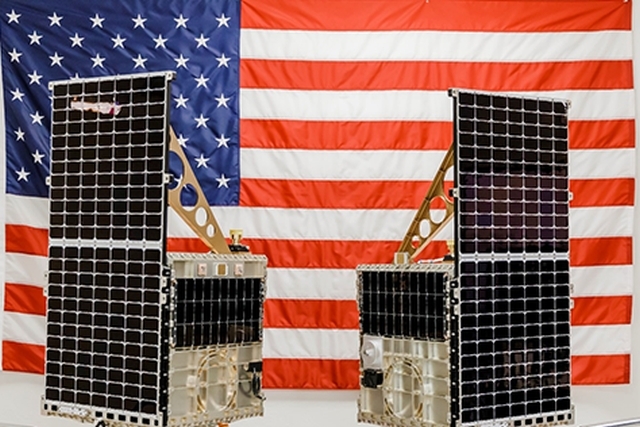DARPA's Space Based Optical Communications Network to use Commercial Satellite Arrays

The U.S. Defense Advanced Research Projects Agency (DARPA) has unveiled a new effort to create a novel optical communications terminal to interconnect diverse constellations into a resilient “space layer” – an internet of small satellites.
Dubbed Space-Based Adaptive Communications Node (Space-BACN), the program aims to create a low-cost, reconfigurable optical communications terminal that adapts to most optical intersatellite link (OISL) standards. Space-BACN would allow seamless communication between various constellations that currently cannot talk to each other. DARPA will host a Virtual Information Session in support of the Space-BACN program solicitation on Wednesday, September 22, 2021 via Zoom.gov.
“There could be tens of thousands of small satellites launched into low—earth orbit (LEO) over the next decade as the demand around the world for affordable space-based capabilities grows,” said Greg Kuperman, Space-BACN program manager in DARPA’s Strategic Technology Office. “The problem with this growth is that optical communications links are currently engineered to only connect satellites within a given constellation – they can’t dynamically adapt waveforms to communicate with satellites in other constellations. This lack of OISL standardization results in a fragmented, stove-piped ‘Wild West’ space domain with new constellations that can’t interoperate, government satellites that can’t communicate between one another, and government satellites unable to take advantage of emerging commercial communications capabilities.”
Space-BACN envisions an adaptable communications terminal that could be reconfigured on-orbit to talk across different standards, presenting a leap in technology from the current state of the art. The program objectives are summarized as “100 Cubed”: 100 Gbps to support most optical standards, 100W or less to minimize power consumption, and under $100K to make it affordable. To achieve this, Space-BACN will focus on three key technical areas: first is a low-cost, optical aperture capable of coupling into single mode fiber; second is a reconfigurable modem that can support multiple optical waveforms up to 100 Gbps; and the third is a novel cross-constellation command and control approach to automate interactions between government and commercial satellites. In addition to the technical challenges, a key driver for the program is to lower cost and weight in order to facilitate ease of integration and use.
“Traditional government optical terminals for coherent space-based optical communications can cost hundreds of thousands to millions of dollars due to the many precision designed and manufactured components that are hand assembled by highly skilled experts in the field,” Kuperman said. “Commercial space companies, on the other hand, are developing ultra-optimized, single-mode coherent systems designed to achieve high-rate communications while lowering cost. These lower-cost systems, however, are not reconfigurable nor compatible with any other standard.”
Since Space-BACN is focused on operating in LEO, it will be able to take advantage of advanced low-cost electronics that can reliably operate in lower radiation environments and more easily connect to the large number of other government and commercial LEO satellite constellations. Additionally, the shorter expected life span of LEO satellites – three to five years – combined with the modularity of the Space-BACN terminal will facilitate rapid refresh cycles and insertions of new technology as it becomes available.
The solicitations for Space-BACN employ a simplified Other Transactions (OT) process aimed at lowering the bureaucratic barrier for companies to make proposals, especially those who’ve never worked with DoD or DARPA before.












